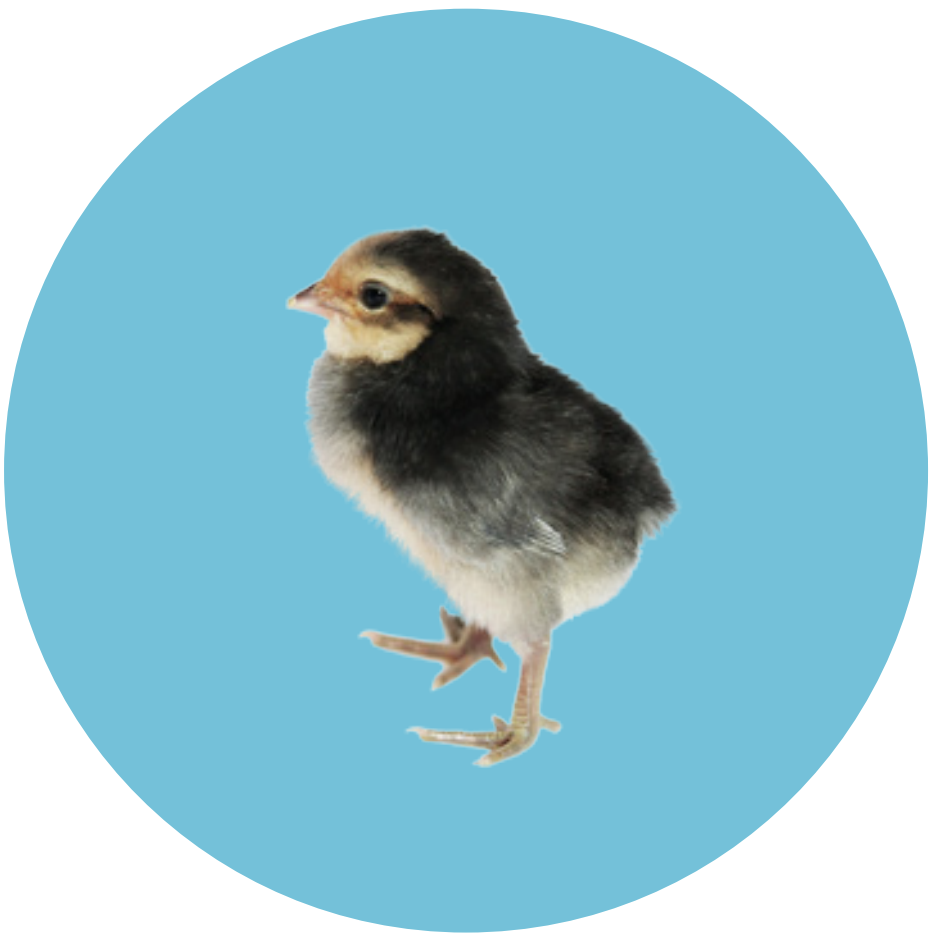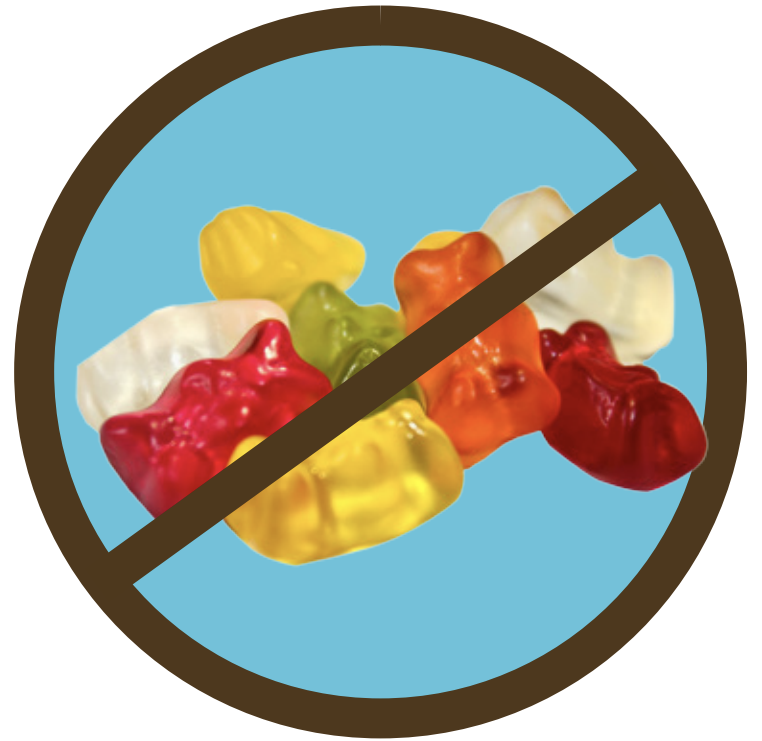Chicken keeping is one of nature's ways of composting
Chicken keeping and composting methods go hand-in-hand to keep food waste out of the landfill while creating healthy soil. Follow this guide and you will be chicken keeping like a pro in no time. You can also take a free self-guided chicken keeping class to learn more.
Reduce waste by feeding animals
Keeping chickens is a great way to keep your food waste out of the landfill, which helps Austin reach its zero waste goal to reduce the amount of waste sent to landfills by 90% by 2040. The Environmental Protection Agency (EPA) Food Recovery Hierarchy shows feeding animals as the third best way to reduce food waste (after reducing the volume of surplus food and feeding hungry people). The average chicken eats about one-quarter pound of food per day or about seven pounds per month. People throw away food scraps every day, and feeding some of it to chickens can keep it out of the landfill.
 |
Benefit by keeping chickens

In addition to reducing waste sent to the landfill, keeping chickens offers many other benefits. With chickens, you can:
- Enjoy fresh eggs.
- Be provided with natural insect control, as the chickens eat them.
- Use the chicken droppings as a natural lawn fertilizer.
- Mix chicken droppings with yard waste to create compost.
- Be entertained by your feathered pets.
Get started with Chicken keeping

- Select your coop
-
Learn about chicken coops
A chicken coop is a covered, secure area where the chickens sleep. The coop needs shade, adequate ventilation and approximately four square feet per standard-sized bird. Most importantly, it should be secure to keep the chickens in and predators out. Make sure the location is in compliance with City ordinances. In addition to having a chicken coop, you will also need these essentials to properly care for your flock:
Run
A run is an area, usually enclosed, that the chickens use during the day. The run should have at least six square feet per bird. Nesting box
Nesting boxes are comfortable spaces for chickens to lay eggs within the coop. Nesting boxes should provide privacy and good ventilation. The coop will need one nesting box per four or five hens. Dimensions are generally 12 inches long, 12 inches wide and 14 inches high. Roosts
Bars, where chickens perch to sleep at night inside the coop, are called roosts. Roosts should ideally be 18 to 24 inches from the ground, with eight to 10 inches of roosting space per bird. Bedding
Bedding is used to line the coop and nesting boxes, and can consist of leaves, straw, hay, pine shavings, wood chips or other organic, absorbent materials. Do not use cedar or juniper shavings because they are toxic to chickens! Decide which type of coop you want
Chicken coops may be stationary or mobile. Some have runs included, while others do not. Check out the different types of coops.
Stationary coop with a run 
Stationary coop without a run 
Chicken tractor 
- Select your flock
-
Chickens are social animals. Get a minimum two to three to start. Chickens need a constant supply of fresh, accessible water. For chicks, do not use an open dish, because they can drown.
Decide how old you want your chickens
Chicks
Chicks are babies, generally under a week or so old. Here are some things to consider. Chicks:
- Are available at more retail locations
- Will have a greater variety of breeds to choose from.
- Require more intensive early care.
- Will have a longer wait time for egg production.

Pullets and hens
Pullets are female chickens, under one year old.
Hens are female chickens one year or older.
Here are some things to consider. Pullets and hens:
- Will have less variety of breeds to choose from.
- Are ready to go “out of the box”
- Are generally faster to produce first egg.


Learn how to integrate new birds into an existing flock
When you already have an existing flock, it is important to keep these things in mind when introducing new birds into that flock:
- Keep new birds in quarantine for at least 28 days.
- Do not integrate chickens with signs of illness because it can spread to other birds in your flock.
- Ideally, introduce at least two birds into the flock at a time.
- Introduce birds of a similar size.
- Introduce new chickens by placing them on the roost at night.
Avoid feeding these to chickens
| Moldy food | Highly processed foods | Junk food, chocolate, candy | |||
|---|---|---|---|---|---|
|
|
|
Make compost while keeping chickens
If you'd like a compost pile, you can build one inside the coop and run. This allows chickens do the turning and limits scratching on the rest of the yard. Alternately, a compost pile can be maintained separately from the coop area. Chicken droppings and food scraps can be placed in the compost pile along with yard waste.
The basic ingredients needed to make compost are organic materials, water and air.
 |
|
| Turning | Finished compost |
|---|---|
| weekly | 3–4 months |
| bi-weekly | 4–6 months |
| monthly | 8–12 months |
Follow the rules
The keeping of chickens must comply with all sections of Title 3 of the City of Austin's land development code. Title 3 focuses specifically on animal regulation. Here are some rules to keep in mind when keeping chickens:
- Animals cannot roam free § 3-2-1 except as specifically provided in this title, an owner or handler may not allow livestock, fowl, a dog, or other domestic or dangerous animal or reptile to run at large.
- Animals cannot make excessive noise § 3-2-2. An owner or handler may not keep an animal that makes frequent or long, continued noise that is disturbing to a person of normal sensibilities.
- Proper care must be provided for animals §3-2-5.
- An animal’s owner shall keep the animal in a clean, sanitary, and healthy condition.
- An animal’s owner or handler shall provide for the animal:
- regular and adequate amounts of nutritious food that is appropriate for the species and that maintains the animal in good health;
- a constant and adequate supply of clean, fresh, potable water that keeps the animal hydrated for environmental conditions; and
- care and medical treatment for injuries, parasites and diseases that is sufficient to maintain the animal in good health and minimize suffering.
- An animal’s owner shall provide the animal with shelter that:
- is large enough for the animal to enter, stand, turn around and lie down in a natural manner;
- keeps the animal dry;
- provides the animal with natural or artificial shade from direct sunlight;
- protects the animal from excessive heat and cold and other adverse weather conditions; and
- is adequately ventilated.
- An animal’s owner may not confine the animal to the extent that it is forced to stand, sit or lie in its own excrement.
- An animal’s owner shall regularly maintain the animal and its shelter to prevent odor or a health or sanitation problem.
- An animal’s owner shall provide the animal with exercise space that is large enough to prevent injury and keep the animal in good condition.
- It is an affirmative defense to prosecution under this section that the animal’s treatment was as directed by a licensed veterinarian.
- Place fowl enclosures correctly §3-2-16. An enclosure used to keep two or more fowl must be located at least 30 feet from a residence or business structure, excluding the residence or business of the fowl's owner or handler.
Also, be sure to check and HOA, neighborhood or property-specific guidelines.



